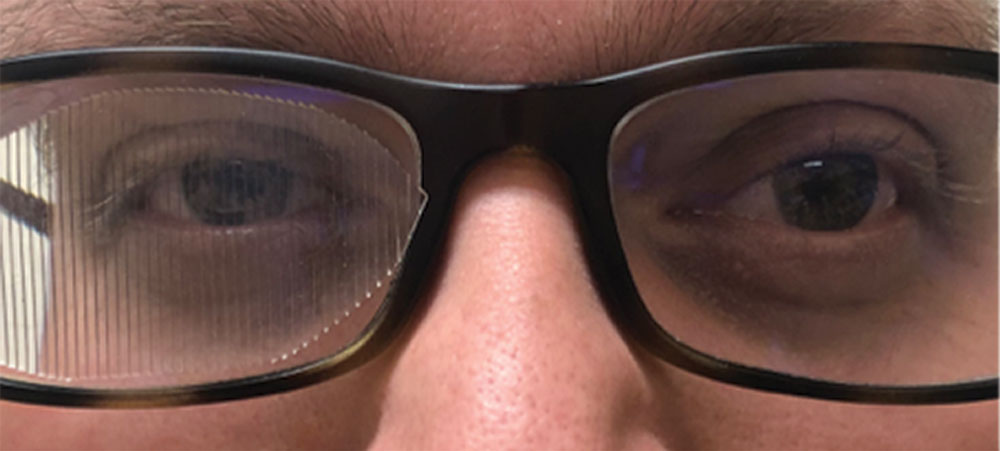 |
For patients with acute acquired concomitant esotropia of 25 prism diopters or less, prismatic treatment in a step-by-step manner may improve outcomes. Photo: Erin C. Jenewein, OD. Click image to enlarge. |
Characterized by a sudden onset of concomitant esotropia with diplopia, the condition known as acute acquired concomitant esotropia is increasing in prevalence in children and adults due to excessive smartphone and screen use. Fresnel prism is a common and effective treatment for reducing prismatic strength in strabismus and various other visual disorders. A recent study found a technique for prismatic treatment that seemed to optimize and speed up outcomes for some patients: treating in a step-by-step manner.
The researchers included 36 patients with acute acquired concomitant esotropia of 25 prism diopters or less. They all underwent one year of prismatic correction using a step-by-step approach to prescribe press-on base-out Fresnel prisms between two and 10 prism diopters. At the conclusion of the study period, the cohort was divided into the following two groups based on whether they regained orthophoria and were weaned off the prisms: the treatment-success group, which consisted of patients who had their esotropia eliminated and were weaned off the prisms within a year, and the treatment-continuing group, which comprised patients who needed to continue wearing a Fresnel prism beyond one year after initiating prismatic correction because diplopia and esotropia still existed.
Slightly less than 40% of the patients were weaned off the prism and regained orthophoria and binocular single vision within a year after treatment began. Those patients tended to have good cooperation, a smaller angle of esotropia and a shorter duration from onset to treatment compared with the treatment-continuing group. Notably, 100% of patients in the treatment-success group had good cooperation throughout treatment, while this was only true for 36% of the treatment-continuing group.
In their paper on the study, the researchers explained the methodology behind a step-by-step treatment plan: “This approach not only uses the optical principle of the prism but also increases the abduction fusion force of patients to reduce and further eliminate esotropia,” they wrote. Additionally, they noted the following reason for choosing base-out Fresnel press-on prisms instead of ground-in prisms to treat patients in the study: “Given gradual prismatic reduction and the higher cost of treatment, ground-in prisms were not recommended even for patients with esotropia less than 14 prism diopters.”
It’s important to consider that only patients with acute acquired concomitant esotropia of 25 prism diopters or less were included in this study. However, at least for this population, the data supports the conclusion that “prismatic correction in a step-by-step manner to reduce prismatic strength allows these patients to achieve successful motor outcomes, avoiding surgical correction and botulinum toxin injection and preventing them from experiencing the trauma and complications caused by surgery and botulinum toxin injection,” the researchers concluded.
Wu Y, Feng X, Li J, et al. Prismatic treatment of acute acquired concomitant esotropia of 25 prism diopters or less. BMC Ophthalmol. June 24, 2022. [Epub ahead of print]. |


